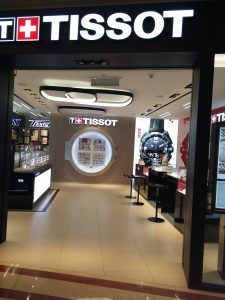Introduction
When we visit the KLCC Suria in Kuala Lumpur, Malaysia, a popular shopping mall, our eyes would be dazzled by illuminations of brands, from local brands to international brands. Lighted logos of brands are prominently placed at various points of their well-designed stores.
Brand owners should like my wife, Datin Azimah: toothpaste (Colgate), washing powder (Breeze), petrol (Shell), and fizzy drink (of course, Coke).

Brands help their owners to generate enduring revenue. These brands are valuable, and they are important intangible assets for corporations.
Methodologies to Value Brands
According to Gabriela Salinas in The International Brand Valuation Manual, there are many methods used to value brands. Many methodologies are developed by brand consulting companies, and one of the most famous methodologies is the Interbrand method.
Valuation Using Interbrand Method
Interbrand is a brand consultancy firm, specializing in areas such as brand strategy, brand analytics, and brand valuation. Its Interbrand method determines the earnings from a brand and capitalizes them by making suitable adjustments. The firm bases its brand valuation on financial analysis, role of the brand and brand strength. In order to calculate brand value, Interbrand uses a five-stage process as follows:
- Segmentation: This stage consists of determining the main homogeneous client groups on which the financial and demand analysis are based.
- Financial analysis: Through this analysis, the model attempts to establish “economic earnings”, also referred to as “intangible earnings”.
- Demand analysis: In this step Interbrand establishes the “Role of Brand Index (RBI)” or the percentage of intangible earnings attributable to earnings, referred to as brand earnings.
- Brand strength analysis: Through competitive analysis, Interbrand analyses brand strength which is in turn related to discount rate.
- Brand value calculation: In this stage, the discount rate is applied to “brand earnings.” The sum of the present value of brand earnings represents brand value. Stage 1: Segmentation
According to Interbrand, as consumer attitudes and behaviours towards brands vary from sector to sector depending on product type, distribution and other market factors, brand value can only be accurately be determined through separate evaluation of the individual segments that represent a group of homogeneous consumers.
Stage 2: Financial analysis-Estimation of “Economic Earnings”
To isolate earnings specifically attributable to the brand, Interbrand determines Economic Value Added, which indicates if a company is capable of generating returns that exceeds the cost of capital employed.
Stage 3: Demand analysis or role of brand index (RBI)
RBI is a measure of how a brand influences customer demand at the point of purchase.
RBI is determined via a three-step process:
- Firstly, Interbrand identifies the demand drivers or the factors that motivate customers to purchase a particular brand.
- Step 2 determines the relative importance of the specific attributes in step 1.
- Lastly, InterBbrand determines the role that the brand plays in each of these drivers. The RBI is expressed as a percentage, such that if RBI is 30%, 30% is extracted from intangible earnings.
Stage 4: Brand strength analysis-Determination of brand risk and discount rate
Brand strength represents the brand’s relative capacity to “guarantee demand” and in this way sustains future earnings. This analysis yields the brand risk which is later expressed as a discount rate. The determined discount rate is then applied to earnings attributable to brand in order to arrive at the brand value.
Stage 4.1: Brand strength analysis
In this stage, the brand strength is compared with that of its competitors for each of the seven brand strength factors. Table 1 shows how Interbrand analyses these attributes as a function of other sub-attributes or sub-criteria. For example, the “market” factor is analysed based on “industry concentration” and “market growth” criteria.
Table 1: Brand Strength Specific Attributes
| Factor | Evaluation Criteria | Maximum Score |
| Leadership | Market share, market position, market segment and brand awareness |
25 |
| Stability | History, current position, satisfaction, customer loyalty |
15 |
| Market | Competitive structure (concentration), market growth, volume, sales |
10 |
| International image | Presence in foreign market, export history |
25 |
| Trend | Consideration, attractiveness |
10 |
| Support | Quality, consistency is translated in term of advertising, identity |
10 |
| Protection | Date of registration, legal coverage and monitoring |
5 |
Source: Interbrand
Stage 4.2: Determination of discount rate
A discount rate that adequately reflects the brand risk profile is used to calculate the present value of future brand earnings. The model assumes a relationship between brand strength and discount rate: the higher the brand strength score, the lower the discount rate. The brand strength index calculated in Stage 4.1 is translated into a discount rate using an S-curve. Thus, a brand with an average strength score will be discounted at the industry WACC, and a leading brand with a maximum brand score of 100 will be discounted at a risk-free rate. The relationship between brand strength index and discount rate in the Interbrand method is shown in Table 2.
Table 2: Relationship between Brand Strength and Discount Rates
| Brand Strength Index |
Discount Rate |
| 100 |
5.0% |
| 75 |
7.1% |
| 50 |
10% |
| 0 |
34.1% |
Stage 5: Calculation of Brand Value
The present value of brand earning is inversely related to brand risk. To calculate brand value for a particular segment, future brand earnings are discounted at present value and an annuity or perpetuity is calculated as a terminal value. The sum of the value of the individual segments yields the total value of the brand.
The Interbrand method’s various components and their inter-relations can be summarised as follows:
- The financial analysis stage is used to determine intangible earnings;
- The RBI module is used to determine the ratio of brand earnings to total intangible earnings; and
- The brand strength analysis module is used to determine the discount rate required for re-expressing future brand’s earnings at present value.
Example of Brand Valuation Using Interbrand Method
When using Interbrand method, brand value is the net present value of the forecast brand earnings, discounted by the brand discount rate. The net present value calculation comprises both the forecast period and the period beyond, reflecting the ability of brands to continue generating future earnings. An illustration of brand valuation using Interbrand model is shown in Table 3.
Table 3: Valuation Using Interbrand Method
| Year ended December 31st, | Year 1 | Year 2 | Year 3 | Year 4 | Year 5 | |
|
FINANCIAL ANALYSIS
|
||||||
| Market (units) | 150,000 | 153,000 | 156,366 | 161,057 | 167,499 | |
| Market growth rate | 2% | 2% | 2% | 2% | ||
| Market share (volume) | 15% | 17% | 19% | 21% | 23% | |
| Volume | 22,500 | 26,010 | 29,710 | 33,822 | 38,525 | |
| Price | 10.00 | 10.00 | 10.25 | 10.50 | 10.75 | |
| Price change | 3.00% | 2.50% | 2.00% | 2.00% | ||
| Branded revenue | 225,000 | 267,903 | 312,136 | 362,233 | 422,425 | |
| Cost of sales | 40% | 90,000 | 107,161 | 124,854 | 144,893 | 168,970 |
| Gross margin | 135,000 | 160,742 | 187,282 | 217,340 | 253,455 | |
| Marketing costs | 18% | 40,500 | 48,223 | 56,184 | 65,202 | 76,036 |
| Depreciation | 0.75% | 1,688 | 2,009 | 2.341 | 2,717 | 3,168 |
| Other overheads | 5.1% | 11, 475 | 13,663 | 15,919 | 18,474 | 21,544 |
| Central cost allocation | 1.2% | 2,700 | 3,215 | 3,746 | 4,347 | 5,069 |
| EBITA (Earnings before interest, tax and amortization) | 78,638 | 93,632 | 109,091 | 126,601 | 147,637 | |
| Applicable tax | 35% | 27,523 | 32,771 | 38,182 | 44,310 | 51,673 |
| NOPAT (Net operating profit after tax) | 51,114 | 60,861 | 70,909 | 82,290 | 95,964 | |
| Capital employed | 78,525 | 93,498 | 108,935 | 126,419 | 147,426 | |
| Working capital | 67,532 | 80,408 | 93,684 | 108,721 | 126,687 | |
| Net PPE | 10,994 | 13,090 | 15,251 | 17,699 | 20,640 | |
| Capital charge as % of capital employed | 8% | 6,282 | 7,480 | 8,715 | 10,114 | 11,794 |
| Intangible earnings | 44,832 | 53,381 | 62.195 | 72,177 | 84,170 | |
|
DEMAND ANALYSIS
|
\ | |||||
| Role of branding Index | 70% | |||||
| Brand earnings | 31,383 | 37,367 | 43,536 | 50,524 | 58,919 | |
|
COMPETITIVE BENCHMARKING
|
||||||
| Brand strength score | 66 | |||||
| Brand discount rate | 7.40% | 0.931 | 0.867 | 0.807 | 0.751 | 0.699 |
| Discounted brand earnings | 29,217 | 32,397 | 35,141 | 37,944 | 41,184 | |
|
BRAND VALUE
|
||||||
| NPV (Net present value of discounted brand earnings from Year 1 to Year 5) | 175,883 | |||||
| NPV of discounted brand earnings beyond Year 5 at 2.5% growth rate | 938,089 | |||||
|
Brand Value
|
1,113,972 |
The Interbrand method assumes that in order to arrive at earning attributable to intangible assets, a capital charge must be deducted from NOPAT.

Conclusion
Brands are valuable intangibles as they can generate continuing income for their owners. Brands can be licensed or sold to other corporations. Interbrand method is a useful tool used to calculate the value of a brand.
About the author:
We wish to inform that we have just accepted a position of Adjunct Professor at the Asia e University based in Subang Jaya, Malaysia. Asia e University is a private university approved by the Malaysian Higher Education Ministry, which offers both on-campus learning and on-line learning.